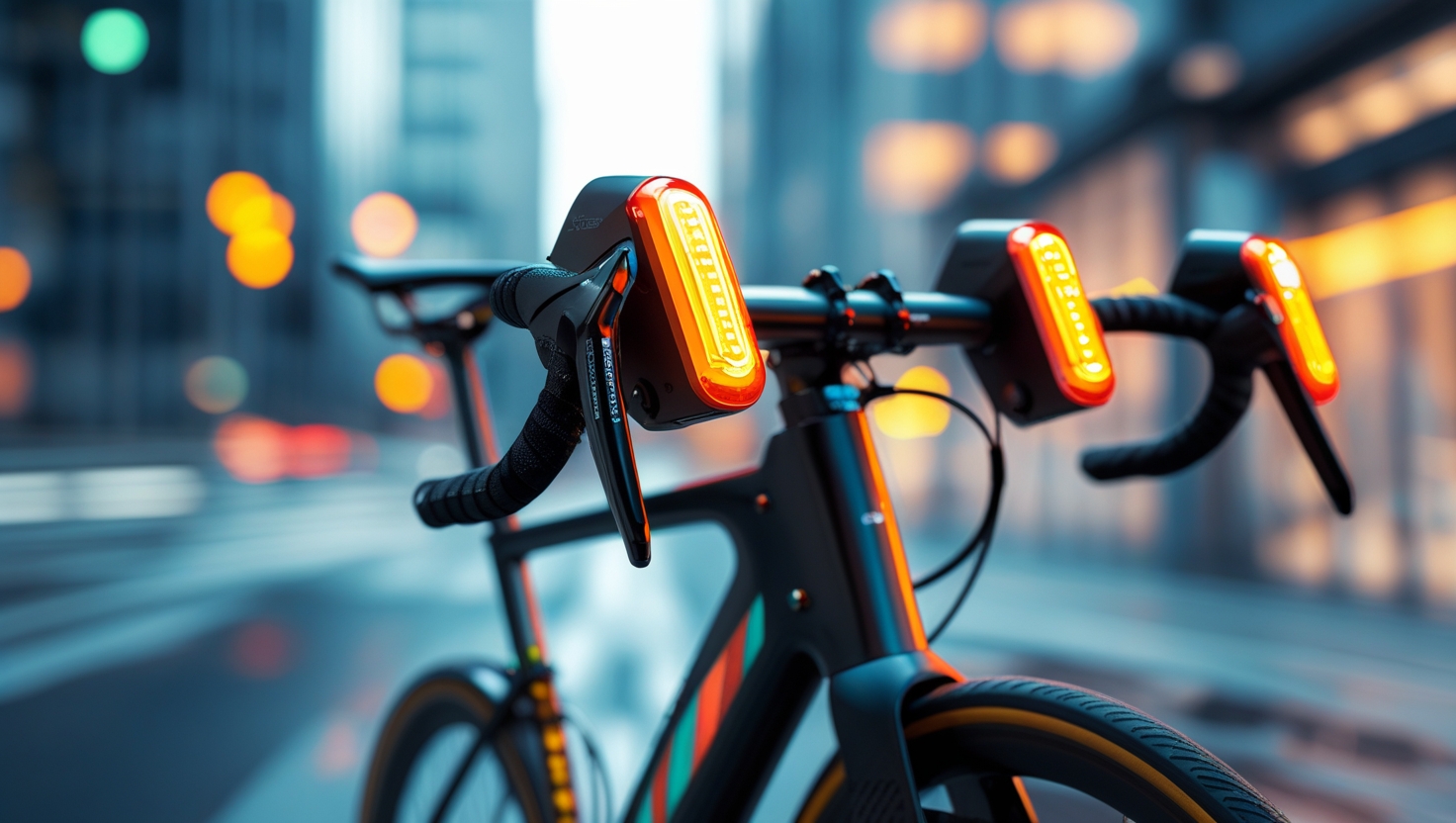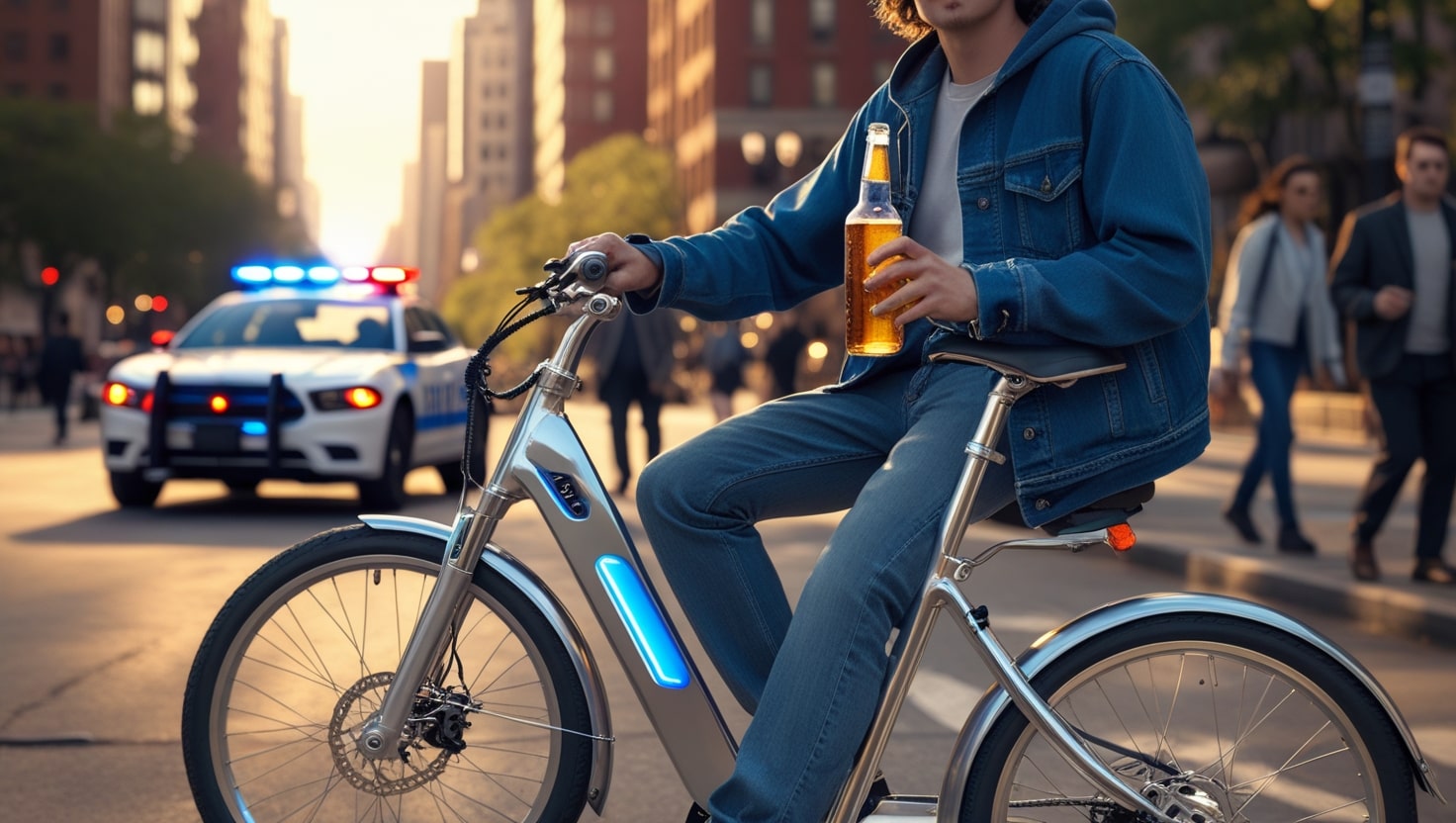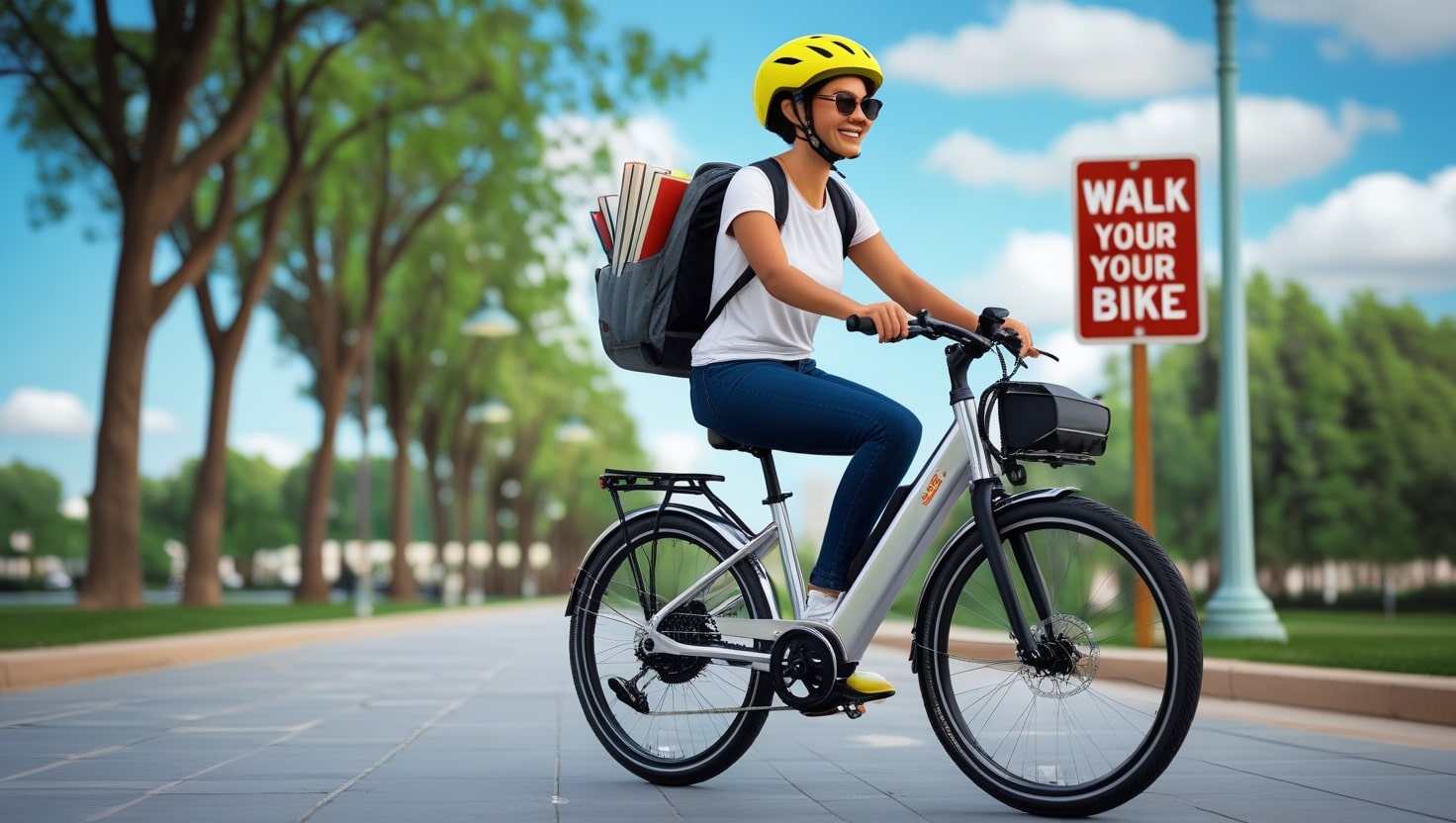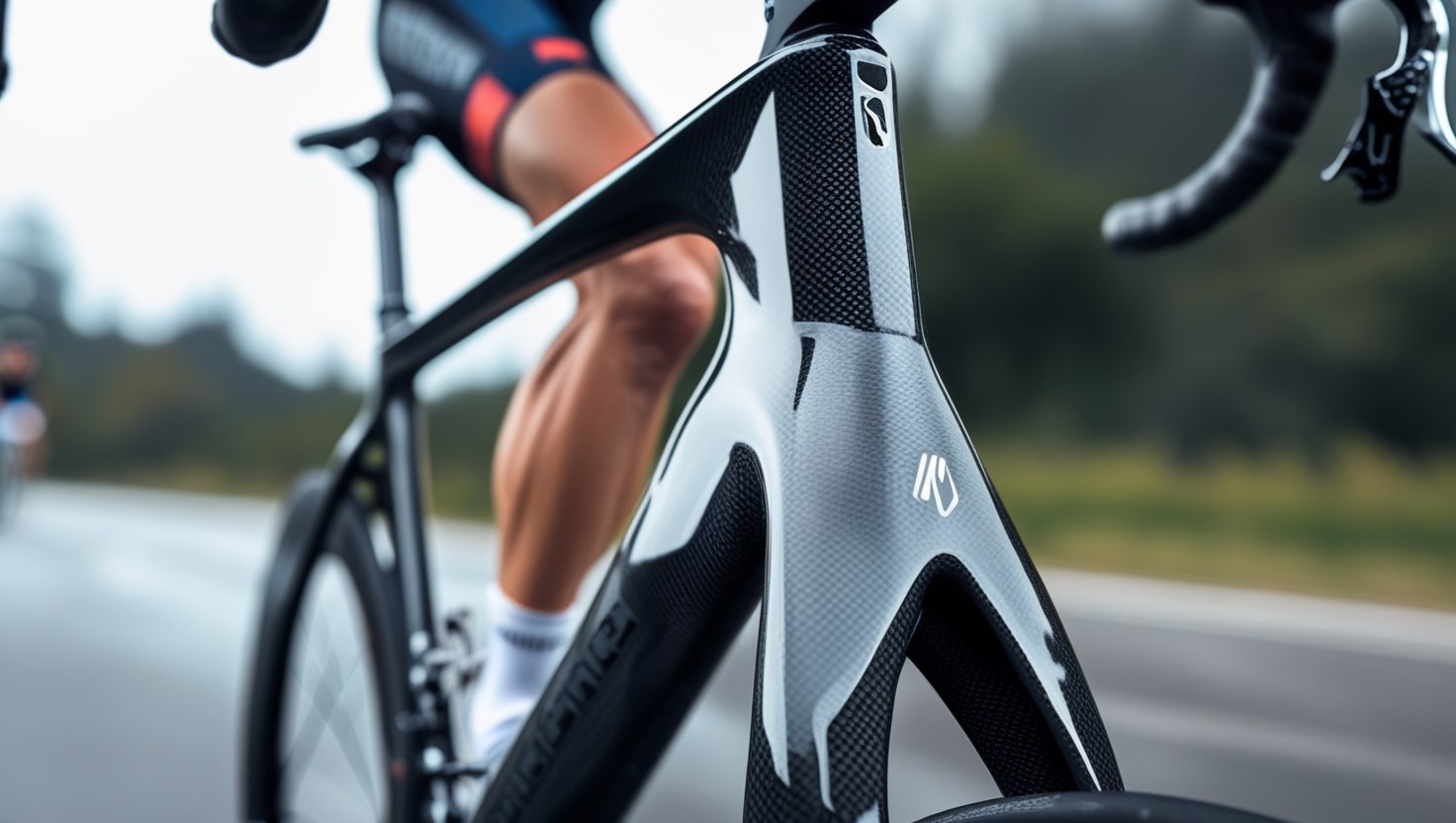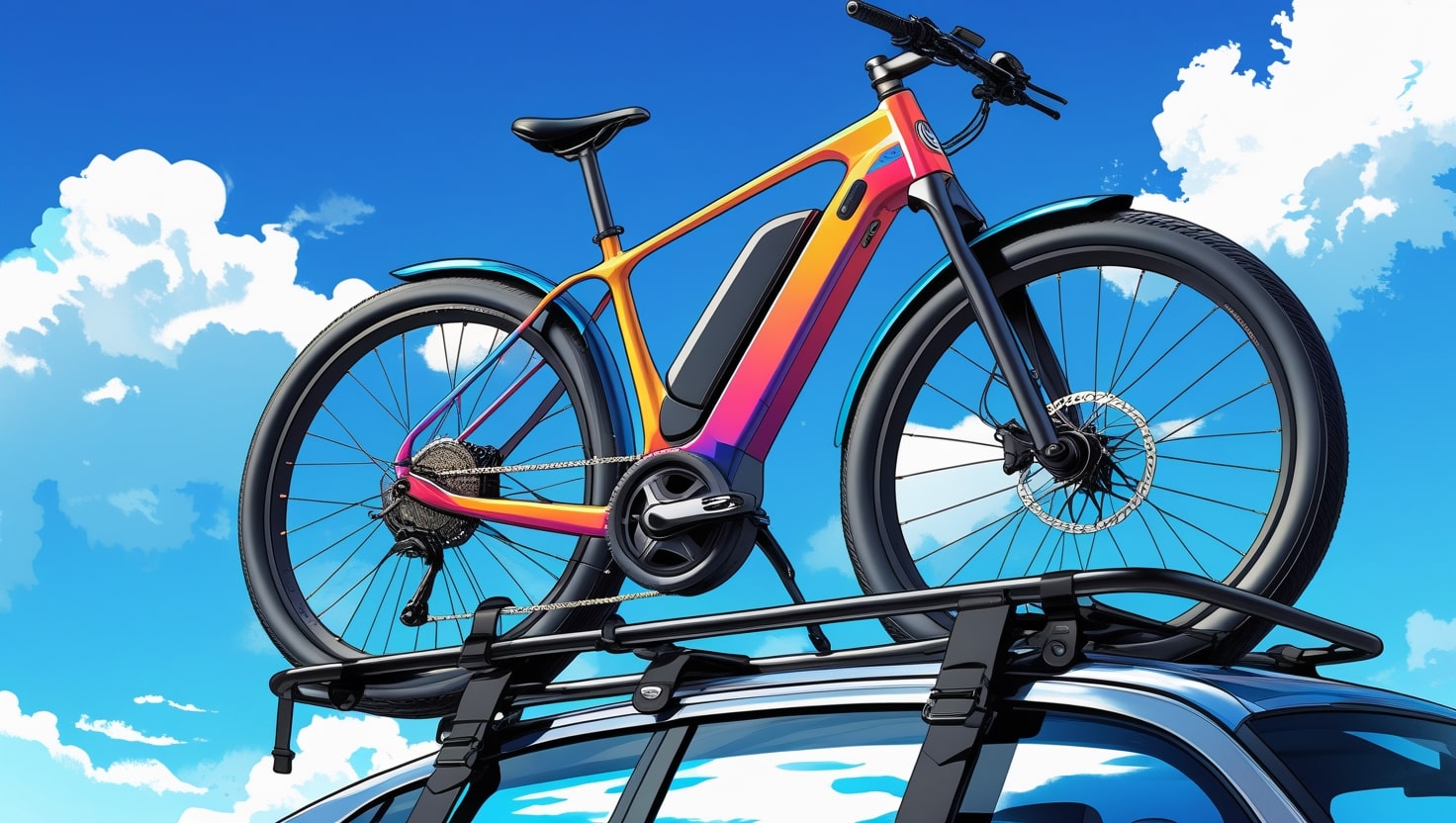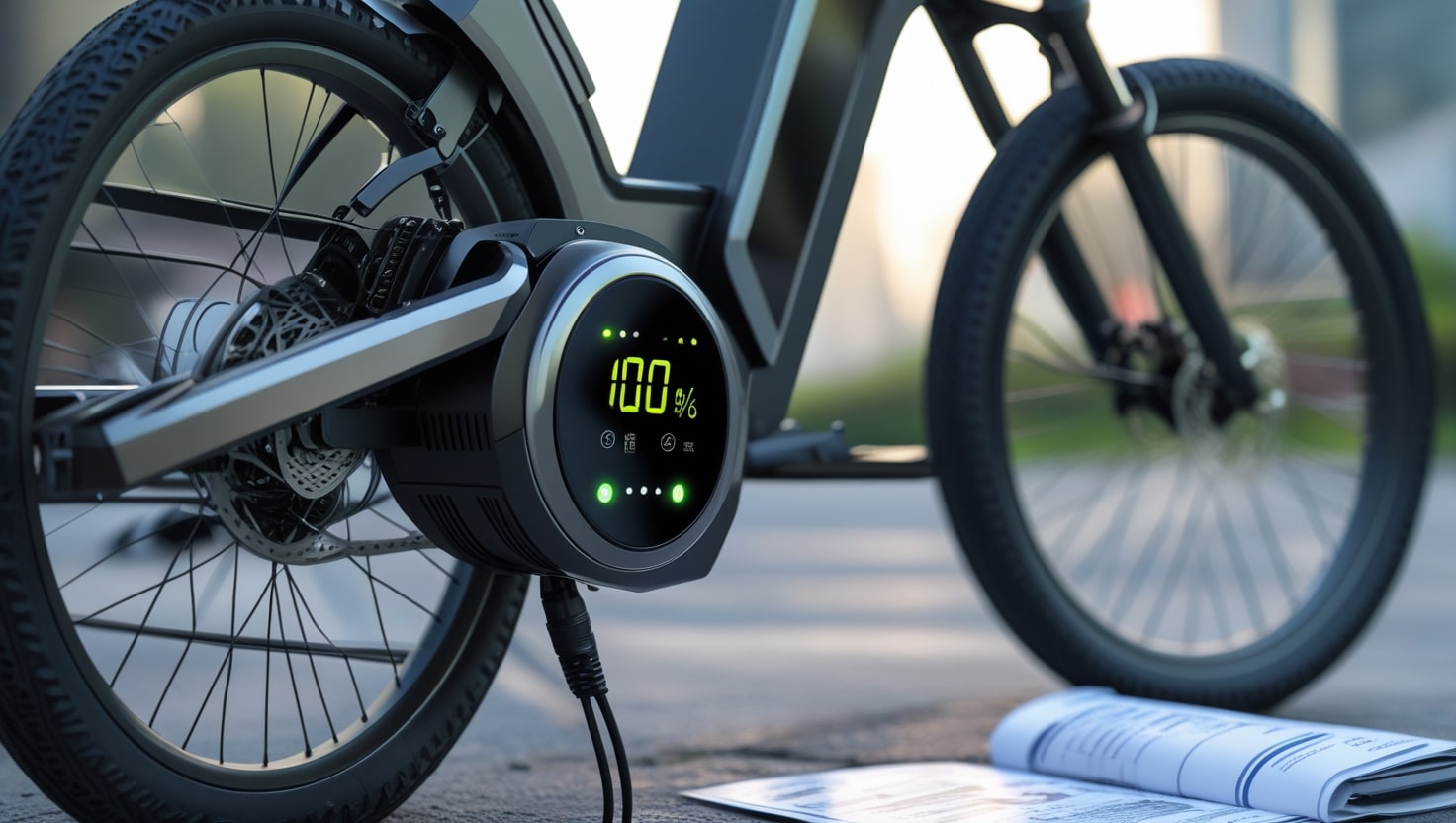As someone who’s relied on a bicycle for daily transport in both urban and rural areas, I’ve seen how vital turn signals for bike are for safety. Whether you ride for recreational activity or as a serious cyclist navigating heavy traffic, the ability to communicate your intentions to motor vehicles and other road users is essential.
With millions of people bicycling around the globe, often alongside fast-moving cars on busy roads, even the simplest tool—like a signal light—can mean the difference between a smooth ride and a serious accident. This is especially true when riding electric or traditional bicycles, where speeds can vary and awareness becomes even more critical.
The importance of clear communication became even more obvious when I began commuting during peak hours. Different types of turn signals suit different riders, and knowing their usage can greatly increase your efficiency on the road. Whether it’s a simple hand signal or an electronic system, having the right guide and instructions helps build solid knowledge for safe navigation.
As cycling’s popularity continues to grow, the need for clear signaling applies to all riders, whether seasoned or new. Bicycles may be simple machines, but using the right tools can elevate their convenience and, more importantly, keep everyone safer on the road.
Current data on bicycle safety states:
From my own rides during rush hour, I’ve noticed that drivers are far more confident when cyclists clearly signal their turns—and this lines up with data showing 78% of drivers feel safer sharing the road under those conditions.
Proper signaling doesn’t just improve comfort—it can actually reduce turning accidents by up to 47%, which is a big deal given how many cycling incidents happen during lane changes or sudden turns.
In my experience, failing to signal when merging lanes often leads to close calls, proving that small actions can prevent serious accidents on the road.
What are Bike Turning Signals
When I first started commuting daily by bike, I quickly realized how vital it was to communicate my intention clearly on busy streets. One of the most important ways a rider can stay safe is by using turn signals, whether that means hand signals or modern devices.
These tools help indicate a change in lanes, a turn, or a stop, giving road users a clear indication of what the cyclist plans to do. The role of signals in safety is huge—they allow others to anticipate your next move, especially when navigating heavy traffic or dim night conditions where risks are higher.
Traditionally, hand signals have been the most common method used to indicate a left turn, a right turn, or stopping. For instance, you can straighten your left arm out to the side to indicate a left turn. For a right turn, you can either extend your right arm out or bend your left arm upward at a 90-degree angle. To signal that you’re slowing down or coming to a stop, you bend your left arm downward at a 90-degree angle.
Thanks to the advancement in technology, LED signals have become a popular, more visible, and effective option. These are often integrated into the bike itself—like in the handlebars or rear lights—and work brilliantly in low-light situations.
Can You Put Turn Signals on a Bike
If you’re wondering whether it’s possible to add turn signals to your bike, the answer is yes—and it’s highly recommended for enhancing your safety on the road. LED turn signals are simple to put on the front and back of your frame, regardless of whether you ride a classic bicycle or a modern electric bike. These days, a lot of possibilities come with wireless remote controls that attach straight to your handlebars, allowing you to conveniently communicate your movements without removing your hands from the grips.
While hand signals remain effective, they can be hard to see during night rides or in low-light conditions. That’s where LED lights shine—literally. They don’t just increase your visibility; they also work well as a supplemented form of signaling, especially when quick reactions matter.
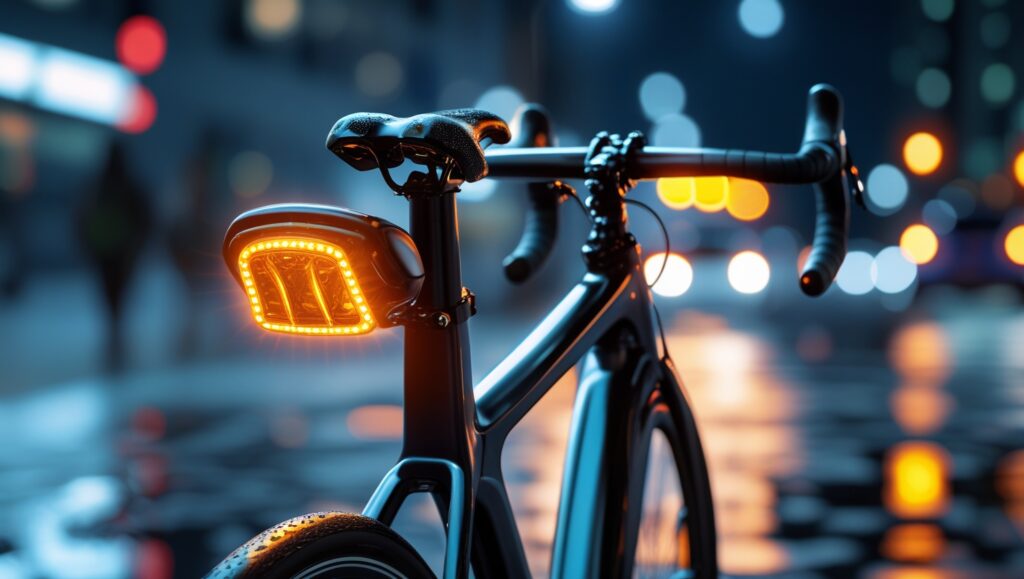
Turn Signal Bike Types
There are two main types of bike turn signals that riders commonly use: hand gestures and LED lights. As a regular cyclist, I’ve used both, and each has its own advantages depending on the situation. Hand gestures involve using your left arm or right arm to signal a turn, which is a simple method that requires no extra equipment.
However, taking one hand off the handlebars can feel less safe, especially at higher speeds. In contrast, LED turn signals—often used on e-bikes—are installed into the bike and are controlled through a switch or remote, giving you full control without compromising balance.
When comparing the two, LED lights clearly offer improved safety and visibility. They are bright, easily visible even in low-light conditions, and many models are integrated into the design of the bike itself. One of the best features is how they allow road users to clearly see your intentions while you keep both hands on the bars.
Why is Bike Turn Signal Important
As someone who’s commuted by bike through urban areas for years, I can say from experience that bike turn signals are essential for preventing accidents. They allow cyclists to indicate their movements, helping drivers and pedestrians react faster, especially in dense traffic. When your rider’s intentions are clear, everyone on the road—road users included—can move with better awareness and fewer surprises.
The NHTSA (National Highway Traffic Safety Administration) and CDC (Centers for Disease Control and Prevention) have both emphasized how good communication can reduce risk, particularly in areas with high traffic density and poor visibility.
Data from a 2020 report shows that over 1,000 cyclists lost their lives in the United States due to traffic-related incidents. Shockingly, nearly 30% of bicycle accidents occurred during nighttime, when visibility enhancements like bike lights and reflective gear are often missing.
A study by the Insurance Institute for Highway Safety (IIHS) found that such additions can reduce the chance of a crash by up to 40%. With so many bicycle-related accidents, adding these tools and using bike turn signals consistently can be a literal lifesaver.
Remembering to Signal When Turning
For every cyclist, learning to use signaling consistently should be part of their everyday riding routine. From personal experience, I found that once I started to practice daily, using turn signals quickly became second nature. Bicyclists need to develop the habit of riding with awareness and mindfulness, especially on busy road sections where clear communication can prevent collisions.
Just like adjusting your helmet or checking your brakes, signaling should feel automatic. A simple but effective technique is mentally prepping for each turn—running through the steps like checking traffic conditions, signaling early, and then turning smoothly.
To cement these habits, many cyclists benefit from targeted training rides in low-traffic environments, where repetition helps reinforce the habit before facing busier conditions. These quieter routes give you space to build confidence and test out different strategies for making signaling automatic.
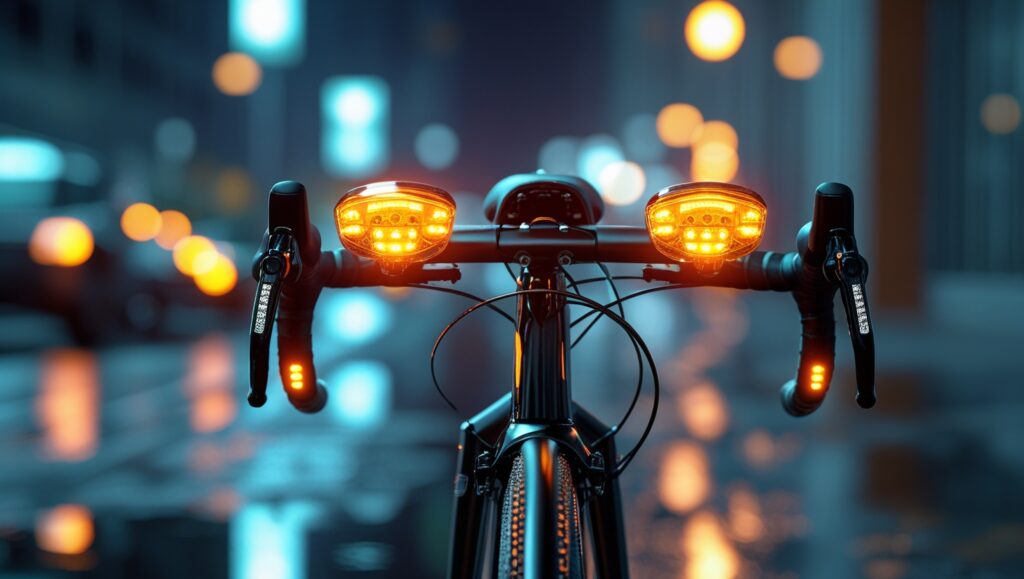
Timing Your Signals
To ride safely and confidently, cyclists need to signal their turns with proper timing. This means giving road users, including drivers and pedestrians, enough time to prepare and respond accordingly. A good rule is to begin signaling at a minimum of 100 feet before turning—this helps clearly show your intentions.
Before making any maneuver, it’s smart to inspect your surroundings. Always check for cars or people nearby and be ready to stop if needed. In my experience, these habits lead to safer rides and build trust among everyone sharing the cycling environment.
Executing a Right Turn on a Bike
Making a right turn on a bike may seem simple, but it actually requires a bit of knowledge, practice, and awareness of local laws. Start by signaling your intent well in advance—either by extending your right arm out to the side or by using left arm signals if required.
I’ve personally found this part crucial, especially in traffic jams or jammed roadways where quick reactions matter. Good signaling helps alert drivers, pedestrians, and other road users that you’re about to make a maneuver, creating smoother and safer movements for everyone.
As you approach the turn, begin to reduce speed and take a glance over your shoulder. This helps you assess your surroundings, ensuring the lane is clear of cars coming from behind or the side. It’s an essential safety habit that prevents unnecessary collisions and ensures an uninterrupted turn. As your vehicle begins moving forward, keep a steady pace, maintain your balance, and stay in control—this part takes attention and calm execution.
To execute the turn smoothly, keep your focus on the road ahead and continue to signal until you’re fully merged into the new lane or road.
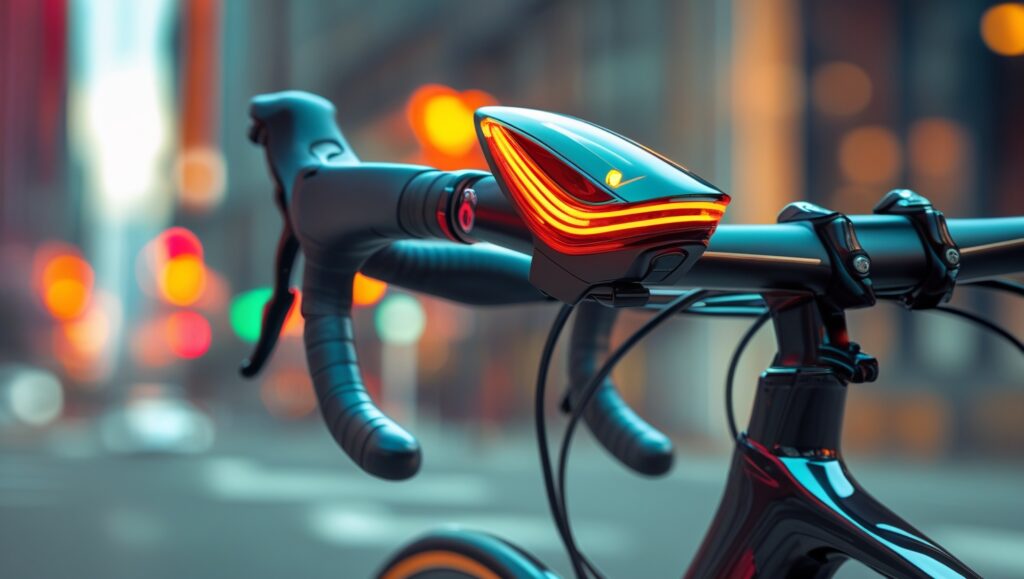
Cornering Techniques for Cyclists
A crucial aspect of riding is learning how to turn securely and gracefully, which calls for specialized techniques. Here are some helpful tips and techniques to help you become a better bike handler.
Approach: As you approach a corner, reduce speed and position your bike properly on the road. Align with the curve to ensure a smooth entry into the turn and prevent accidents caused by poor setup.
Lean: To keep your balance and control, position yourself and gently lean your body and bike together. Evenly dispersing weight avoids slipperiness and loss of grip during tight turns.
Focus: Continue looking straight ahead, heading for the road’s exit. A strong focus helps guide your movements smoothly, avoiding sudden movements that can destabilize your ride.
Pedaling: Avoid pedaling mid-turn to reduce instability. Instead, maintain a steady pace, then disembark from the turn onto a straighter path before exiting and resuming speed along the route.
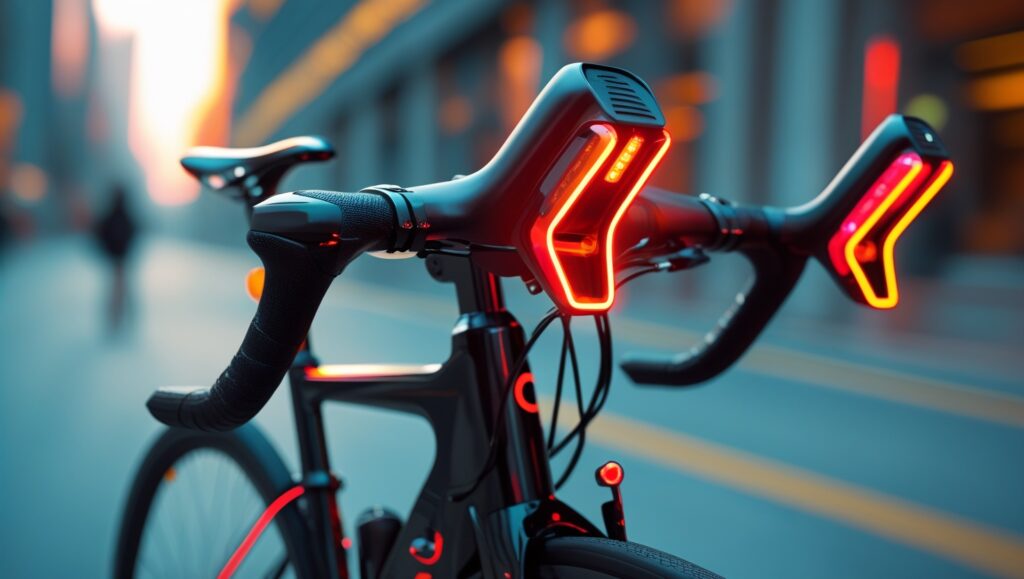
Proper Usage of Bicycle Turn Signals
Bicycle riders can maximize the usage of turn signals by adhering to important rules that guarantee their proper and efficient operation.
Plan Ahead: Give road users plenty of notice before you initiate a turn or lane change. This gives motorists the time to prepare, adjust, and react effectively, reducing risk on the highway and in other traffic environments. A clear signal ahead of any changes helps everyone stay safe.
Be Consistent: Make using signals part of your daily routine. Consistent signaling builds trust and predictability, leading to safer interactions with others on the road.
Maintain Awareness: Always assess your environment before initiating any maneuver. Make sure it’s safe to proceed and be prepared to stop if needed. Switching lanes without checking can cause surprises, so careful planning prevents mistakes before they happen.
Combine Methods: In low light conditions or complex situations, use both hand signals and electronic signals. This combination improves visibility and ensures your communication is clear.
Conclusion
Turn signals on bicycles are crucial parts of sensible cycling. They help riders communicate with drivers and other road users, reducing the risk of accidents and building a more respectful and safer traffic environment. Whether you’re using hand signals or newer digital systems, knowing the types and proper usage of these tools is key.
Every ride is an opportunity to build mastery over safe habits. When cyclists prioritize signaling as part of their regular cycling routine, it helps protect not only themselves but everyone they share the road with.
Following comprehensive instructions and practicing clear instructions allows for a smoother road experience. These practices don’t just enhance your safety; they also promote mutual respect between all who move through our streets.
Related: Can You Ride Dirt Bikes on the Road?
FAQs
Can you install turn signals on an e-bike or bicycle?
Yes, you can easily install turn signals on both traditional bicycles and e-bikes, and doing so is a smart move for any rider. From my own experience riding in heavy traffic and during low-light conditions, adding signals made a noticeable difference in visibility and overall safety.
How do cyclists remember to signal when they turn?
Cyclists can remember to signal more easily by developing a solid habit through regular practice and consistent reminders. One method I’ve found helpful is using mental checklists during each ride, especially while practicing in low-traffic areas where there’s time to focus without pressure. With repetition, signaling becomes a natural part of riding, just like checking mirrors or wearing a helmet—it flows automatically once the habit sticks.
When should a bicyclist signal when turning?
Cyclists should always signal their turn well in advance, ideally at least 100 feet before making the move. This kind of early signaling helps road users clearly understand your intentions and gives them enough time to react accordingly.

